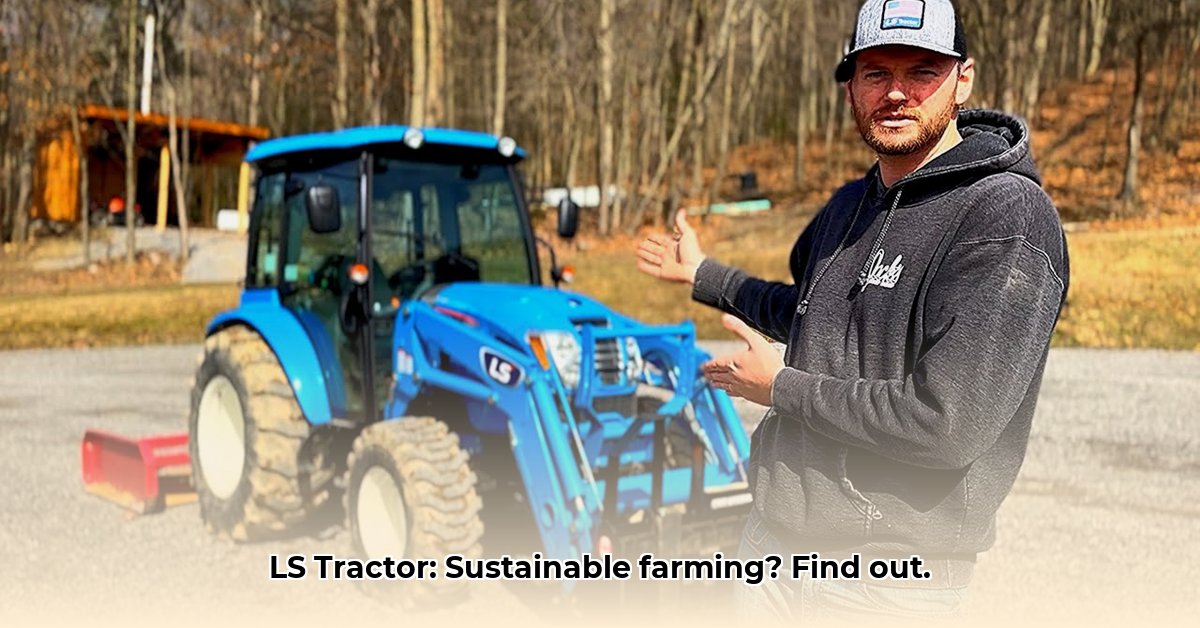
Choosing the right tractor is a pivotal decision for any farmer, impacting profitability and sustainability. This review analyzes LS Tractors, weighing their competitive pricing against potential drawbacks for sustainable agricultural practices. We'll examine price, service, reliability, parts availability, and the overall impact on sustainable farming. For another perspective, check out these Kioti tractor reviews.
Price: A Competitive Edge?
LS tractors frequently boast lower initial costs than established brands like Kubota and John Deere. An LS XJ2025 package, including a front-end loader and backhoe, might cost around $22,500—a substantial saving. However, this price difference often reflects variations in features and specifications. A direct comparison of similarly equipped models is crucial for a fair assessment. Don't be swayed solely by the sticker price; carefully consider the features included for the price.
Dealer Service: A Geographic Consideration
The quality of dealer service varies considerably depending on location. Positive experiences include rapid warranty repairs and responsive support. Conversely, some farmers report unresponsive dealers, lengthy repair times, and parts procurement difficulties. This inconsistency is a significant concern. Prospective buyers should personally visit their local dealer, assess their responsiveness, and consult with local farmers about their experiences. Word-of-mouth is invaluable in assessing regional service quality.
Reliability: A Mixed Bag of Experiences
LS tractor reliability is a contested topic. While some owners report years of trouble-free operation, others describe costly repairs and extensive downtime due to mechanical malfunctions. Online forums and videos showcase both positive and negative user experiences. The lower initial cost might be offset by unexpected repairs and reduced productivity. The potential for significant downtime must be weighed against the initial cost savings.
Parts Availability: The Korean Connection
LS tractors' Korean manufacturing base presents a parts availability challenge. While parts are generally obtainable, obtaining them promptly can be challenging, especially in remote areas. Extended wait times translate directly into lost productivity during crucial periods like harvest, negatively impacting profitability. Before purchasing, inquire about typical parts delivery times in your region and consider the impact of potential delays on your farming operations. A few days' delay during harvest can significantly impact your bottom line.
Sustainable Farming: Balancing Costs and Efficiency
Sustainable farming necessitates efficiency and minimal downtime. Tractor breakdowns, particularly during planting or harvesting, can result in substantial crop losses. The initial cost savings of an LS tractor might be negated by extended repairs or yield reductions due to parts delays. An unreliable tractor, regardless of price, undermines the principles of sustainable agriculture. Long-term costs related to downtime and repairs require careful consideration.
Buyer's Guide: Making an Informed Decision
Purchasing a tractor is a substantial investment. Follow these steps for a well-informed decision:
- Comprehensive Research: Thoroughly examine online reviews and forums, identifying trends and weighing positive and negative experiences.
- Dealer Assessment: Visit your local LS dealer, inquiring about service capabilities and parts availability.
- Competitive Pricing: Obtain quotes and specifications for comparable models from other manufacturers like Kubota and John Deere.
- Total Cost of Ownership: Create a budget encompassing potential repair and parts costs over the tractor's lifespan, accounting for potential downtime.
- Warranty Evaluation: Carefully review any extended warranty's coverage and limitations.
Conclusion: A Nuanced Perspective
LS Tractors present a compelling value proposition for budget-conscious farmers with readily available dealer support in their region. However, concerns about long-term parts availability and reliability warrant careful consideration. The best choice depends on individual needs and priorities. A thorough assessment of long-term costs, including potential downtime, should guide your decision-making process, ensuring your investment aligns with the demands of sustainable and profitable farming.